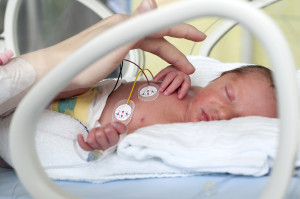 The Florida Lung Doctors like to keep you informed of news and research in any field of respiratory medicine. Today we bring you new information about the treatment of breathing difficulties in premature babies.
The Florida Lung Doctors like to keep you informed of news and research in any field of respiratory medicine. Today we bring you new information about the treatment of breathing difficulties in premature babies.
In the UK, and across the world, recent research could eventually modify the use of ventilation in neonatal units. The new study, recently published in the New England Journal of Medicine, was funded by the National Institute for Health Research (NIHR) Health Technology Assessment (HTA) Programme, the NIHR Biomedical Research Centre at Guy’s and St Thomas’ NHS Foundation Trust and King’s College London.
How To Breathe With Tiny Lungs
When Babies are born extremely prematurely, they risk developing breathing problems because their lungs are not mature. This problem is multiplied by the fact these tiny systems can be damaged by the same breathing support that they require to stay alive.
A Choice of Ventilation
There are two types of breathing support used for these babies. “Breathing support can be provided by conventional ventilation, which assists their breathing at their breathing rate.”
 Alternatively, the breathing of extremely premature babies can be assisted “by high-frequency oscillatory ventilation (HFOV). During HFOV smaller, shorter bursts of gas are delivered which may be less damaging to their fragile lungs and therefore may reduce the chronic respiratory problems experienced by babies born very prematurely.” You can read more about this treatment at this reliable source.
Alternatively, the breathing of extremely premature babies can be assisted “by high-frequency oscillatory ventilation (HFOV). During HFOV smaller, shorter bursts of gas are delivered which may be less damaging to their fragile lungs and therefore may reduce the chronic respiratory problems experienced by babies born very prematurely.” You can read more about this treatment at this reliable source.
Later Effects of High-Frequency Oscillatory Ventilation
According to the New England Journal of Medicine, the study at King’s is the first to examine how the lung function behaves years later, years after the HFOV, when the babies grew into young adolescents. The children were entered in a randomized trial at birth, and tested between the ages of 11 and 14.
The researchers wanted to know whether HFOV improved the lung function in adolescence of children who were born very prematurely. Was their lung function better or worse than the babies treated by traditional methods?
 Ultimately, the this study as well as the United Kingdom Oscillation Study discovered that the children who had HFOV possessed modestly superior lung function than those who had been supported by the traditional method and equipment.
Ultimately, the this study as well as the United Kingdom Oscillation Study discovered that the children who had HFOV possessed modestly superior lung function than those who had been supported by the traditional method and equipment.
1. Their tests proved in particular that the HFOV children were able to breathe out more easily.
2. The researchers were aware that earlier studies had expressed concerns about HFOV and bleeding into the brain. Happily, in the tests, there were no differences between the HFOV group and the traditional group in this regard.
3. The study found no evidence of “adverse neurological effects. Indeed, some cognitive skills were found to be enhanced in the HFOV group.” Through questionnaires, the children’s teachers rated significantly rated the HFOV group significantly “higher in art and design, information technology and technology suggesting they had better visual and spatial abilities.”
Experts deemed the results were modest but significant, as the study confirmed the efficacy of the high-frequency oscillatory ventilation for newborn premature babies. The researchers stated,”The poorer lung function in the conventional-ventilation group than in the HFOV group may have consequences over time – for example, by causing greater vulnerability to lung-function insults such as smoking.”
The Florida Lung Doctors thank you for reading this blog, and we hope you enjoy discovering our variety of respiratory news from around the world.

